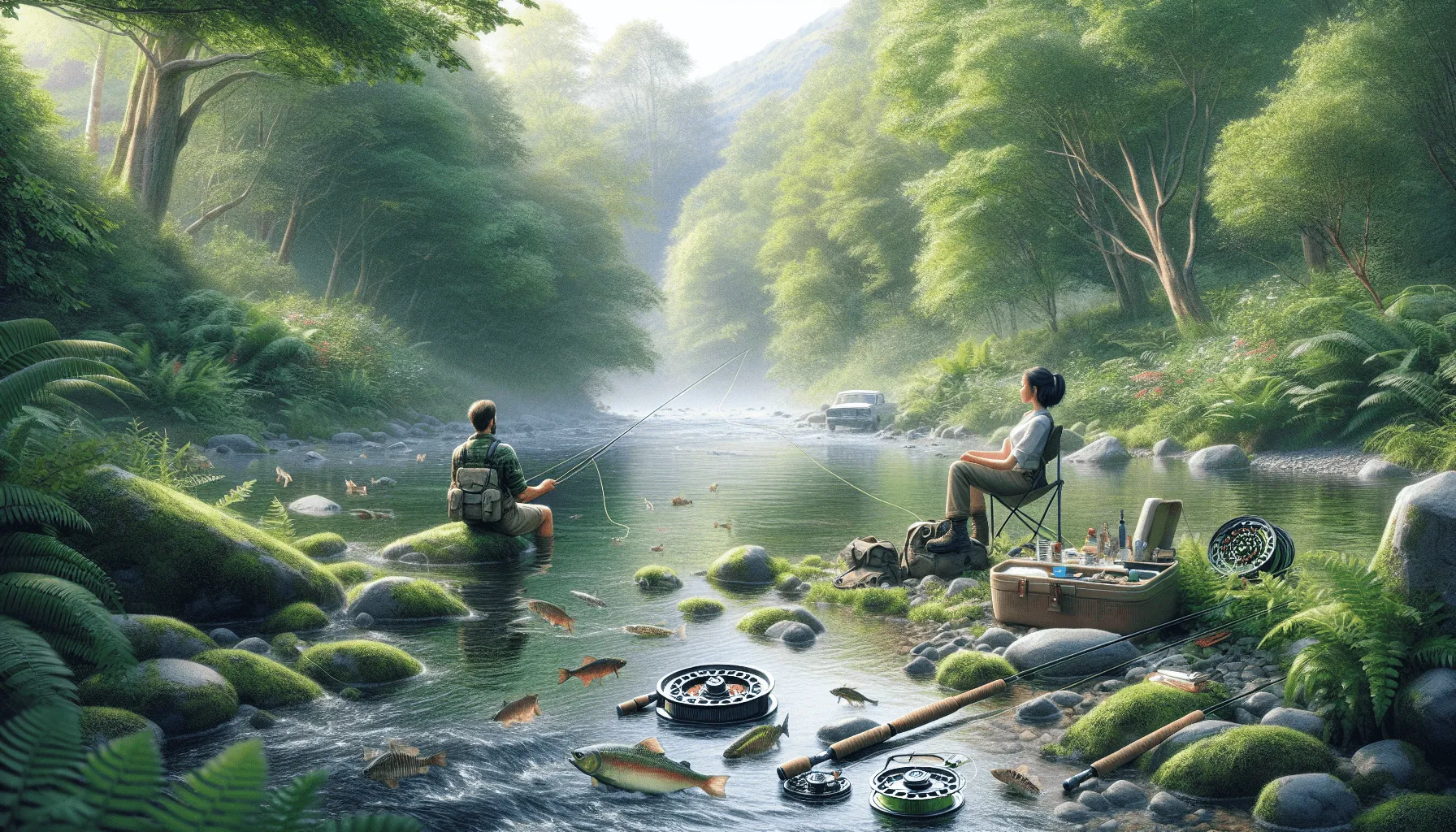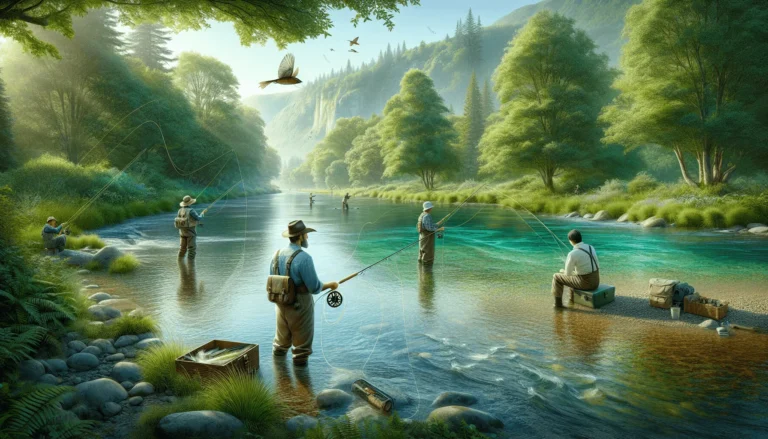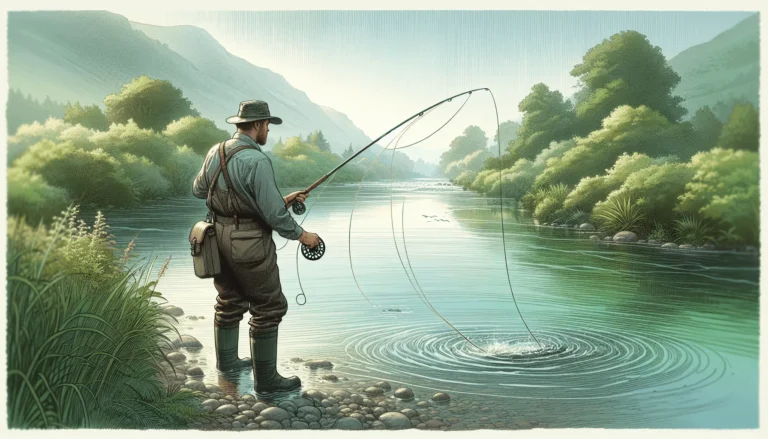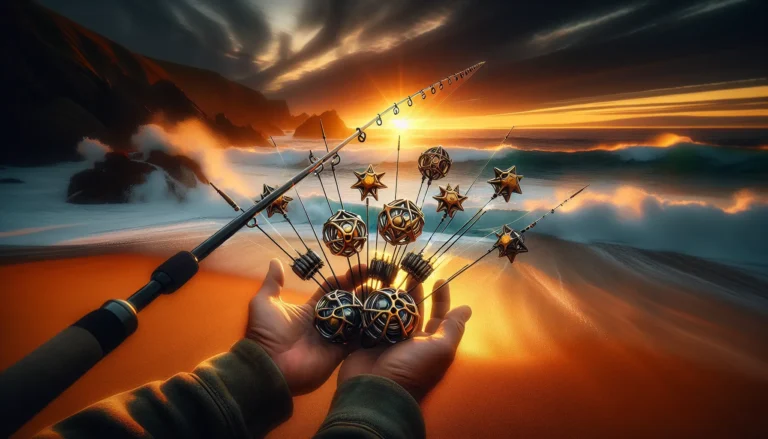Fly fishing is more than just a pastime—it’s an immersive hobby that has captured the hearts of many outdoor enthusiasts. With its roots tracing back centuries, fly fishing combines skill, patience, and a deep connection with nature. Today, it continues to grow in popularity, attracting new anglers eager to experience the tranquility and challenge it offers.
Despite its allure, fly fishing often carries the reputation of being an expensive pursuit. This perception comes from several factors:
- The high cost of specialized equipment
- The exclusivity of certain fishing locations
Whether it’s the price tag on a premium Orvis rod or the question of why fly line is so expensive, many find themselves asking: Is fly fishing really that costly?
This article aims to unravel the truth behind these expenses. By breaking down the costs involved in fly fishing and providing insights into budget-friendly alternatives, we hope to equip you with a clear understanding of what to expect financially if you decide to dive into this rewarding hobby.
Understanding the Costs of Fly Fishing Equipment
Breakdown of Essential Gear for Beginners
When starting fly fishing, you’ll need a few key pieces of equipment:
- Fly Rod: This is your primary tool. Available in various lengths and weights to suit different fishing conditions.
- Fly Reel: Holds the fly line and provides drag to help tire out fish.
- Fly Line: Specially designed to cast lightweight flies.
- Leader and Tippet: Connects the fly line to the fly, allowing for delicate presentations.
- Flies: Imitations of different aquatic insects or baitfish that you present to fish.
Initial Investment Ranges
The cost of these essential items varies widely:
Budget-Friendly Setup
- Fly Rod: $30-$100
- Fly Reel: $20-$60
- Fly Line: $10-$40
- Leader and Tippet: $5-$15
- Flies: $1-$3 each
A complete budget setup can start around $100, making it accessible for beginners.
Higher-End Gear
- Fly Rod: $200-$800
- Fly Reel: $100-$500
- Fly Line: $50-$150
- Leader and Tippet: $15-$30
- Flies: $2-$5 each
Investing in high-end gear can easily exceed $1,000 but offers advantages in performance and durability.
🔥 Top 5 Budged-friendly Fly Fishing COMBO 🔥
- Charter Series Gear and Accessories by Wakeman (Black)
- M MAXIMUMCATCH Maxcatch Extreme Fly Fishing Combo Kit
- Sougayilang Fly Fishing Rod Reel Combos with Lightweight Portable Fly Rod
- TOPFORT Fly Fishing Rod and Reel Combo Starter Kit, 4 Piece Lightweight
- PLUSINNO Fly Fishing Rod and Reel Combo, 4 Piece Lightweight Ultra-Portable Graphite Fly Rod
Performance and Durability Comparison
Budget-friendly gear is often made from less expensive materials like fiberglass or lower-grade graphite. These options are perfectly suitable for beginners but may lack the sensitivity and casting distance of higher-end rods. Budget reels might not provide as smooth a drag system, which can be crucial when fighting larger fish.
High-end equipment uses advanced materials such as high-modulus graphite for rods and precision-machined aluminum for reels. These materials enhance sensitivity, casting accuracy, and overall durability, providing a more enjoyable experience. High-quality lines also offer better floatation and casting properties.
Despite the differences, starting with a budget fly fishing setup allows you to get a feel for the sport. As you gain experience, you might appreciate the benefits that come with upgrading to higher-quality gear.
Read Also: How to Choose What to Wear Under Waders When Fly Fishing
Additional Gear for Fly Fishing Enthusiasts
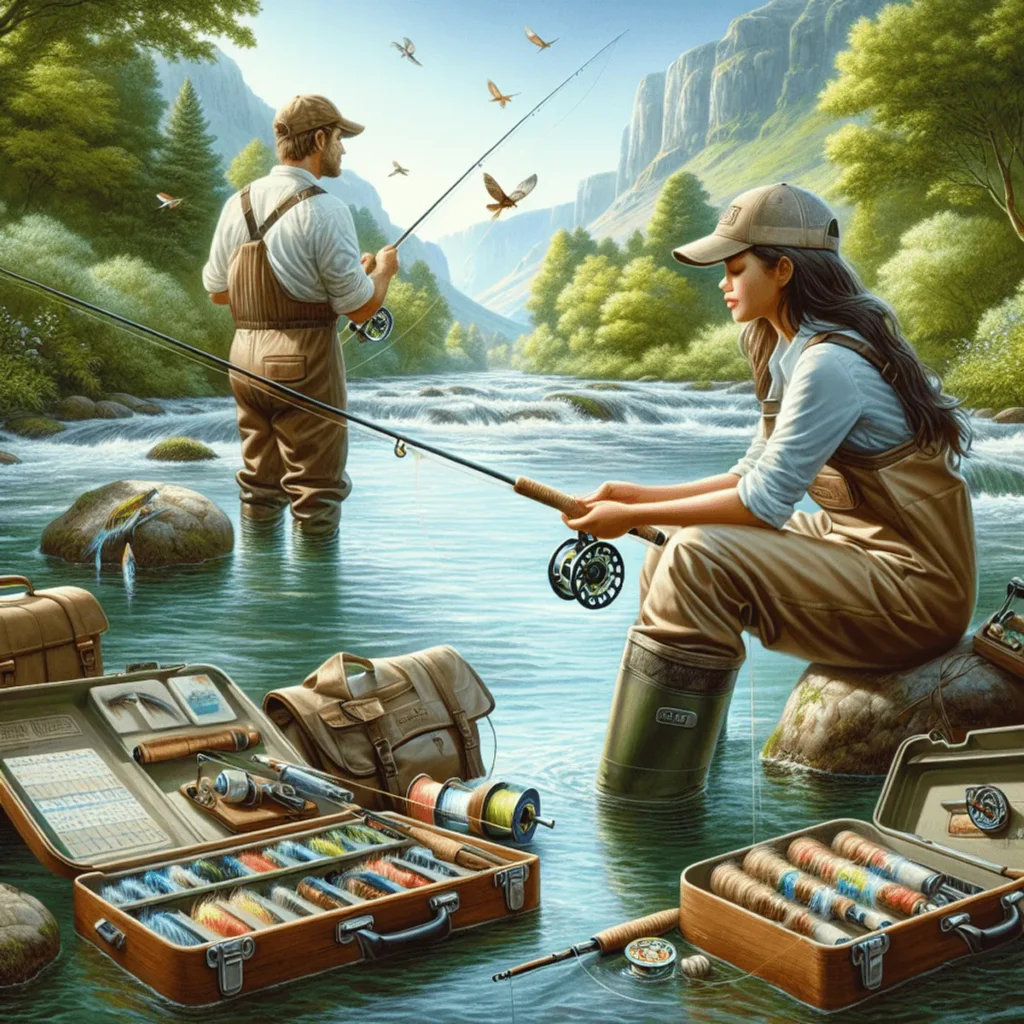
Investing in extra accessories can greatly enhance your fly fishing experience. Items like waders, boots, rod and reel cases, and fly boxes not only provide comfort but also ensure convenience during your fishing trips.
Waders
These waterproof garments allow you to wade into deeper waters without getting wet, crucial for accessing prime fishing spots. High-quality waders come with breathable materials and reinforced seams, making them a worthy investment despite their higher cost.
Boots
Paired with waders, specialized boots offer better traction on slippery riverbeds, enhancing safety. They come in various designs, including felt or rubber soles, which cater to different terrains.
Rod and Reel Cases
Protecting your gear during transport is essential. A durable rod/reel case prevents damage from impacts and environmental elements, extending the lifespan of your equipment.
Fly Boxes
Keeping your flies organized is made easier with a well-designed fly box. These boxes prevent flies from getting crushed or lost, ensuring you have the right fly at hand when needed.
These items contribute to the overall expenses of fly fishing. While they represent an additional cost upfront, their benefits in terms of comfort, convenience, and gear protection make them valuable additions to your fly fishing arsenal. Investing wisely in these accessories can lead to a more enjoyable and successful fishing experience.
The Cost Implications of Fishing Locations: Public vs. Private Waters
Choosing between fishing in public waters and private rivers or lakes can have a big impact on your overall expenses. Let’s explore the cost differences.
Public Waters
Public waters are often free to access, requiring only a fishing license, which is usually affordable. This makes them an attractive option for budget-conscious anglers.
Private Rivers or Lakes
On the other hand, private rivers or lakes typically require permits or fees. These costs can vary widely:
- Day passes: Some private locations offer day passes that can range from $20 to $100.
- Memberships: Others may have annual memberships costing several hundred dollars.
- Guided trips: Hiring a guide for a private water experience can add another layer of expense, sometimes reaching into the thousands.
While private waters can offer more seclusion and potentially better fishing conditions, they come with higher costs. Balancing these options allows you to manage your fly fishing budget effectively while still enjoying diverse fishing experiences.
Ongoing Expenses Beyond Initial Setup: Maintenance, Flies & Travel Costs in Fly Fishing
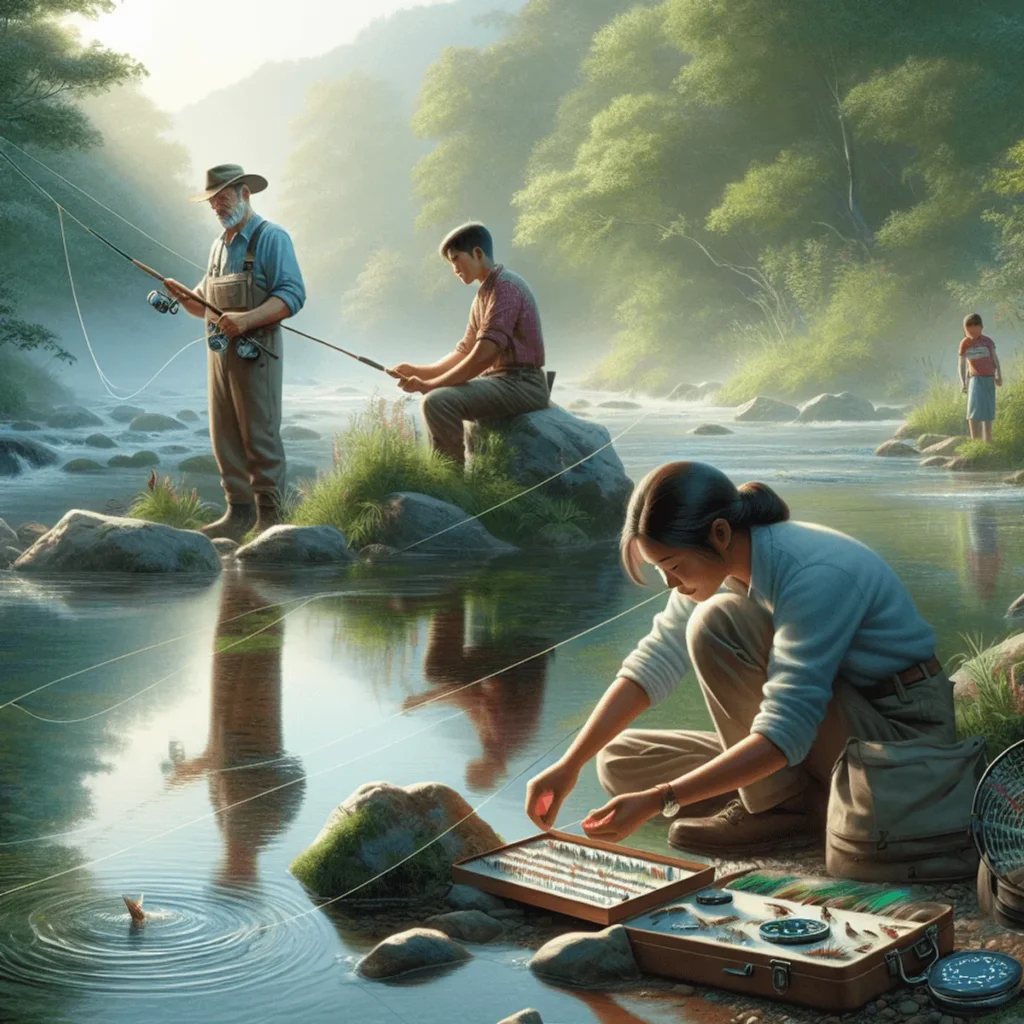
Maintaining an active fly fishing hobby involves several recurring costs. These expenses can add up over time, making it essential to budget accordingly.
Gear Maintenance
- Cleaning and Replacing Parts: Regular maintenance of your fly fishing gear ensures its longevity and optimal performance. This includes cleaning rods, reels, and lines after each use to prevent damage from dirt and debris. Occasionally, parts like reel bearings or line guides may need replacement.
- Protective Gear: Items such as rod sleeves and reel cases help protect your investments from wear and tear during transport and storage.
Purchasing Flies
- Frequent Replacements: Flies tend to get lost or damaged regularly due to various factors like snags on underwater vegetation or fish bites. Consequently, you will need to replenish your stock often.
- Fly Patterns: Depending on the fishing conditions and target species, different fly patterns might be necessary. This can lead to a diverse collection of flies, each suited for specific scenarios.
Travel Costs
- Reaching Prime Locations: Accessing prime fishing spots often involves travel expenses. Whether it’s gas for road trips, airfare for distant destinations, or fees for guided tours, these costs can quickly accumulate.
- Accommodation and Meals: Multi-day fishing trips may necessitate lodging and dining expenses, further contributing to the overall cost of the hobby.
Understanding these ongoing expenses helps prepare you for the financial commitment required in fly fishing. Balancing these costs with your enjoyment of the sport is key to maintaining a sustainable hobby.
Comparative Cost Analysis: Is Fly Fishing More Expensive Than Other Hobbies?
When comparing fly fishing to other popular hobbies like golf or snowboarding, the costs can vary widely.
Golf
A set of golf clubs can range from around $200 to several thousand dollars for high-end brands, as highlighted in this insider’s view on golf equipment sales. Add in green fees, club memberships, and the occasional lesson, and the annual cost can quickly climb.
Snowboarding
Snowboarding presents a similar financial picture. A quality snowboard setup—including board, bindings, and boots—can start at approximately $300 but easily surpass $1,000 for premium gear. Lift tickets and season passes further add to the expense, often costing hundreds of dollars each season. This sport is often perceived as a rich person’s activity, which could apply to snowboarding as well.
Fly Fishing
Fly fishing’s initial investment might be comparable to these hobbies. A basic fly fishing setup can start at around $100 but may exceed $1,000 for higher-end gear. Unlike golf or snowboarding, ongoing costs in fly fishing primarily revolve around gear maintenance and travel to fishing spots rather than access fees.
In terms of perceived value and enjoyment:
- Golf: Provides social interaction and physical activity but requires consistent investment.
- Snowboarding: Offers an adrenaline rush and outdoor experience but demands high upfront and recurring costs.
- Fly Fishing: Delivers serenity and a connection with nature with flexibility in spending based on personal preferences.
Each activity offers unique rewards that justify their costs differently depending on what you value most in a hobby.
How Personalization and Customization Can Affect Your Fly Fishing Budget
Customizing your fly fishing gear can lead to higher expenses, especially when you start using advanced techniques and specialized equipment associated with fly fishing.
Factors That Can Increase Costs
One factor that can increase costs is the choice of specific types or brands of flies. High-quality, hand-tied flies are often more expensive than mass-produced ones. Anglers who prefer using custom-tied flies tailored to specific fishing conditions might find themselves spending significantly more.
Specialized Equipment
- Expensive Fly Rods: Advanced anglers often invest in high-end fly rods made from premium materials like graphite or bamboo. These rods provide better performance but can cost several hundred dollars or more.
- Custom Reels: A high-performance reel with advanced drag systems and lightweight materials can also add to your expenses. While basic reels are sufficient for beginners, specialized reels enhance the overall fishing experience.
- Technical Clothing: Specialized waders and boots designed for extreme conditions offer enhanced comfort and durability but come with a higher price tag.
Examples of Personalization
- Nymphing Setups: Advanced nymphing techniques may require specific rod lengths, weights, and specialized lines.
- Saltwater Fly Fishing Gear: If you venture into saltwater fly fishing, you’ll need corrosion-resistant gear that withstands harsh environments.
Balancing Cost and Value
These personalized choices not only enhance your fishing efficiency but also contribute to the enjoyment of the sport. However, they do come at a cost, making fly fishing potentially expensive for those opting for advanced techniques and equipment.
By understanding these aspects, you can make informed decisions about where to invest in your fly fishing journey, balancing cost with the value derived from a customized setup. For instance, exploring different shoreline strategies and tactics could also provide valuable insights into how to optimize your fly fishing experience without excessively inflating your budget.
Finding Affordable Fly Fishing Options Without Sacrificing Quality or Experience!
Tips for Sourcing Budget-Friendly Equipment
Finding affordable fly fishing gear doesn’t mean compromising on quality. Here are some effective strategies:
- Buy Second-Hand Gear: Platforms like eBay, Craigslist, or dedicated fishing forums often have gently used equipment at a fraction of the cost.
- Sales and Discounts: Keep an eye out for sales at local tackle shops or online retailers specializing in angling supplies. Seasonal discounts can offer significant savings.
- Outlet Stores: Brands like Orvis and Sage have outlet stores where you can find discounted gear.
Evaluating Starter Packages for Fly Fishing
Starter packages can be a great way to get into fly fishing without breaking the bank. When evaluating these packages, consider the following:
- Comprehensive Kits: Look for kits that include essential items such as a fly rod, reel, line, and flies. Some packages even come with instructional DVDs or books.
- Quality vs. Quantity: Ensure that the included gear is of decent quality. A cheap package with low-quality components may end up costing more in the long run due to replacements.
- Brand Reputation: Opt for packages from reputable brands known for durability and performance. This ensures you’re getting reliable gear even at a lower price point.
Recommendations for Good Value Starter Packages
Here are a few recommendations based on affordability and quality:
- Redington Crosswater Combo: Known for its balance of performance and price, this combo includes a rod, reel, line, and carrying case.
- Orvis Encounter Fly Rod Outfit: Another excellent choice offering high-quality components suitable for beginners.
- Cabela’s Prestige Fly Outfit: Comes with everything you need to start fly fishing, including a rod, reel, backing, line, and leader.
By sourcing budget-friendly equipment and evaluating starter packages wisely, you can enjoy fly fishing without sacrificing quality or experience.
Conclusion: Enjoying Fly Fishing Without Breaking the Bank
Fly fishing doesn’t have to be expensive. While many wonder, “why is fly fishing so costly?”, understanding the expenses involved reveals that there are plenty of ways to enjoy this hobby without overspending.
- Affordable Options: Explore budget-friendly equipment. Look for second-hand gear or sales at local tackle shops and online retailers specializing in angling supplies.
- Beginner Packages: Consider starter packages that offer good value without overwhelming costs.
- Public Waters: Take advantage of public waters that require only a license, avoiding private locations with high fees.
Is fly fishing expensive? It can be, but with mindful choices, you can immerse yourself in this beautiful sport while keeping expenses manageable. Enjoy the serenity and thrill of fly fishing without financial strain by making informed decisions about gear and locations.
FAQs (Frequently Asked Questions)
Is fly fishing an expensive hobby?
Fly fishing can be perceived as expensive due to the initial investment in gear and equipment. However, costs can vary significantly based on the choices you make, from budget-friendly setups to high-end gear. Understanding these options can help you manage your expenses.
What are the essential items I need to start fly fishing?
To begin fly fishing, you’ll need a fly rod, a reel, fly line, leaders/tippets, and flies. These essential items form the core of your setup, and prices can range from affordable to premium based on brand and quality.
Are there ongoing costs associated with fly fishing?
Yes, beyond the initial setup costs, there are ongoing expenses such as maintaining your gear, purchasing flies regularly (as they can get lost or damaged), and travel costs to reach good fishing locations.
How do public and private fishing waters differ in terms of cost?
Fishing in public waters is often free or low-cost, whereas private rivers or lakes may require permits or fees. This difference can impact your overall budget for fly fishing.
Can I find affordable fly fishing gear without sacrificing quality?
Absolutely! There are many ways to source budget-friendly equipment such as buying second-hand gear or taking advantage of sales at local tackle shops or online retailers. Starter packages that offer good value can also help beginners get started without overwhelming costs.
Is it possible to personalize my fly fishing experience on a budget?
While personalization can lead to increased spending—such as using specific types or brands of flies—there are still ways to customize your experience affordably. Focusing on essential upgrades rather than high-end specialized equipment can enhance your enjoyment without breaking the bank.

